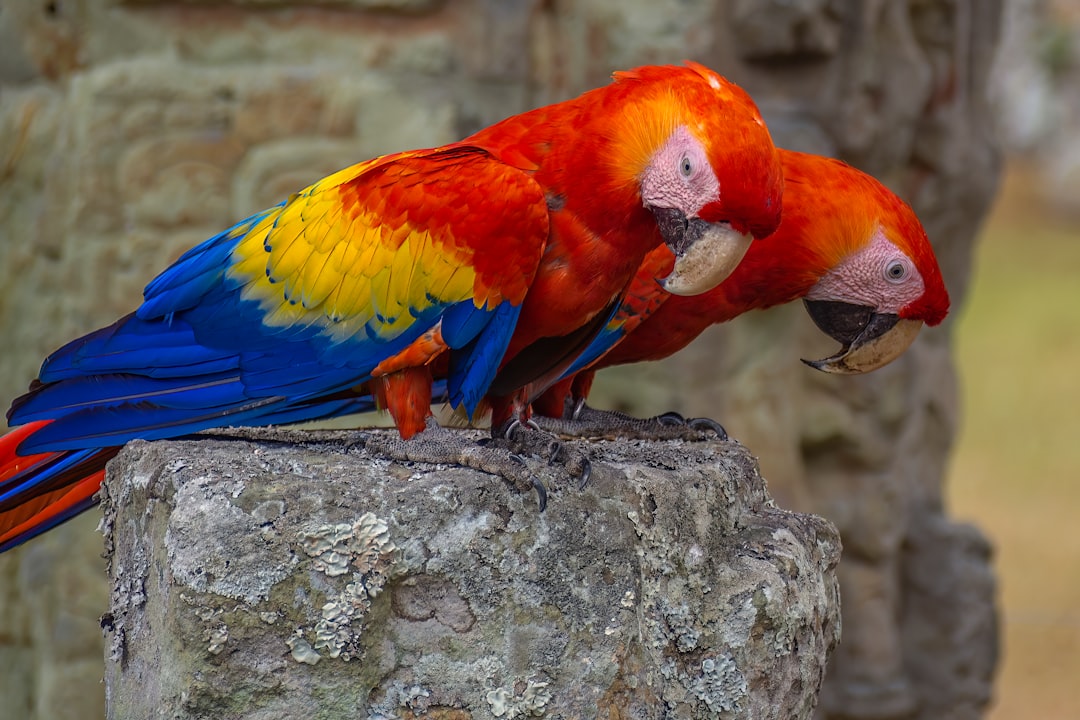
Honduras, a Central American nation bordered by Guatemala, El Salvador, and Nicaragua, is a country rich in history, culture, and natural beauty. With its diverse landscapes ranging from lush rainforests to stunning coastlines, Honduras offers a unique blend of experiences for travelers. The capital city, Tegucigalpa, is nestled in a mountainous region and serves as the political and economic hub of the country.
The country is known for its warm and welcoming people, who take pride in their heritage and traditions. Spanish is the official language, but various indigenous languages are also spoken, reflecting the rich tapestry of cultures that have influenced Honduras over the centuries.
From the ancient Maya civilization to the colonial Spanish influence, the historical layers of Honduras are evident in its architecture, customs, and daily life. As travelers venture into this captivating land, they will discover not only breathtaking landscapes but also a deep sense of community and cultural identity that defines the Honduran experience.
Key Takeaways
- Honduras is a Central American country known for its rich history, diverse culture, and stunning natural landscapes.
- The country has a complex history, with influences from Mayan, Spanish, and African cultures, resulting in a unique blend of traditions and customs.
- Must-visit places in Honduras include the ancient Mayan ruins of Copan, the beautiful Bay Islands, and the vibrant city of Tegucigalpa.
- Honduras is home to breathtaking natural wonders such as the Pico Bonito National Park, the Copan Ruins Archaeological Park, and the stunning beaches of Roatan.
- Local cuisine in Honduras is a delicious mix of Spanish, African, and indigenous flavors, with traditional dishes like baleadas, tamales, and sopa de caracol being popular among locals and visitors alike.
Historical and Cultural Facts
Honduras boasts a complex history that dates back thousands of years. The region was once home to the Maya civilization, which flourished between 250 and 900 AD. The remnants of this ancient culture can be seen in the archaeological sites scattered throughout the country, with Copán being one of the most significant.
This UNESCO World Heritage Site features impressive stone carvings and hieroglyphics that provide insight into the social and political life of the Maya. The ruins are a testament to the advanced knowledge and artistry of this civilization, making them a must-visit for history enthusiasts. The arrival of Spanish conquistadors in the early 16th century marked a significant turning point in Honduran history.
The Spanish colonization led to profound changes in the social structure, economy, and culture of the region. The introduction of Catholicism played a crucial role in shaping modern Honduran society, as many indigenous beliefs were blended with Christian practices. Today, vibrant festivals such as Semana Santa (Holy Week) showcase this fusion of cultures, where traditional rituals are celebrated alongside religious observances.
The rich tapestry of Honduran culture is further enhanced by its diverse ethnic groups, including Garifuna, Lenca, and Miskito communities, each contributing unique traditions, music, and art forms.
Must-Visit Places in Honduras

When exploring Honduras, several destinations stand out for their historical significance and natural beauty. One such place is Roatán, an island located off the northern coast in the Caribbean Sea. Known for its stunning beaches and vibrant coral reefs, Roatán is a paradise for divers and snorkelers.
The Mesoamerican Barrier Reef, the second-largest coral reef system in the world, offers an underwater wonderland teeming with marine life. Visitors can engage in various water sports or simply relax on the pristine shores while soaking up the sun. Another essential stop is the city of Copán Ruinas, which serves as a gateway to the ancient Maya ruins of Copán.
This small town is charming and filled with local artisans selling handmade crafts. The archaeological site itself is renowned for its intricately carved stelae and altars that depict historical figures and events from Maya mythology. A visit to Copán provides not only a glimpse into the past but also an opportunity to appreciate the surrounding lush landscapes that enhance its mystical atmosphere.
Natural Wonders and Outdoor Activities
| Location | Natural Wonder/Activity | Visitor Count |
|---|---|---|
| Grand Canyon, USA | Canyon Hiking | 6 million |
| Great Barrier Reef, Australia | Snorkeling | 2 million |
| Machu Picchu, Peru | Hiking | 1.5 million |
| Niagara Falls, Canada/USA | Boat Tours | 30 million |
Honduras is blessed with an abundance of natural wonders that cater to outdoor enthusiasts. One of the most remarkable locations is La Mosquitia, a remote region characterized by dense rainforests and diverse wildlife. This area is home to several indigenous communities and offers opportunities for eco-tourism and adventure activities such as hiking, birdwatching, and river rafting.
The Río Platano Biosphere Reserve, a UNESCO World Heritage Site within La Mosquitia, is particularly noteworthy for its rich biodiversity and pristine ecosystems. For those seeking adventure on land, Pico Bonito National Park presents an exhilarating experience. Located near La Ceiba on the northern coast, this park features rugged mountains, cascading waterfalls, and lush tropical forests.
Hiking trails wind through the park’s diverse habitats, allowing visitors to encounter various flora and fauna along the way. Birdwatchers will be delighted by the chance to spot exotic species such as toucans and quetzals. Additionally, opportunities for zip-lining through the treetops provide an adrenaline rush while offering breathtaking views of the surrounding landscape.
Local Cuisine and Traditional Dishes
Honduran cuisine reflects a blend of indigenous ingredients and Spanish influences, resulting in a unique culinary landscape that delights the senses. One of the most iconic dishes is “baleadas,” which consists of flour tortillas filled with refried beans, cheese, avocado, and various toppings such as scrambled eggs or hot sauce. This simple yet flavorful dish is a staple in Honduran households and can be found at street vendors throughout the country.
Another traditional dish worth trying is “sopa de caracol,” or conch soup. This hearty seafood soup features conch meat simmered with coconut milk, spices, and vegetables, creating a rich and aromatic flavor profile. It is often served with rice or fried plantains on the side.
Additionally, “tamales” made from corn dough filled with meats or vegetables wrapped in banana leaves are popular during festive occasions and family gatherings. The culinary diversity of Honduras extends beyond these dishes; fresh seafood from coastal regions and tropical fruits like mangoes and pineapples further enhance the gastronomic experience.
Tips for Traveling to Honduras

Traveling to Honduras can be an enriching experience if approached with proper preparation and awareness. First and foremost, it is advisable to stay informed about safety conditions in various regions of the country. While many areas are safe for tourists, some urban centers may have higher crime rates.
Researching travel advisories from reputable sources can help travelers make informed decisions about their itineraries. When visiting Honduras, it is essential to respect local customs and traditions. Engaging with locals in a friendly manner can enhance cultural exchanges and provide deeper insights into daily life in Honduras.
Learning a few basic Spanish phrases can go a long way in fostering connections with residents who may appreciate your effort to communicate in their language. Additionally, travelers should consider their health precautions before embarking on their journey.
It is also wise to drink bottled water to avoid potential stomach issues caused by tap water. Lastly, packing appropriately for varying climates is crucial when traveling through Honduras. The coastal areas tend to be hot and humid while mountainous regions can be cooler at night.
Lightweight clothing suitable for warm weather should be complemented by layers for cooler evenings or higher altitudes. In summary, Honduras offers a wealth of experiences that cater to diverse interests—from exploring ancient ruins to indulging in delicious cuisine amidst breathtaking natural landscapes. With careful planning and an open mind, travelers can immerse themselves in the rich culture and stunning beauty that this Central American gem has to offer.
If you’re interested in exploring more about various places around the world, you might find the article on Illinois Facts and Places to Visit quite enlightening. Similar to the comprehensive details provided in the Honduras article, this piece offers a deep dive into Illinois, showcasing its key historical facts, notable landmarks, and must-visit sights. Whether you’re planning a trip or just curious about different regions, this article serves as a great resource for expanding your knowledge about Illinois’s unique cultural and geographical landscape.
FAQs
What are some interesting facts about Honduras?
– Honduras is home to the ancient Mayan ruins of Copán, a UNESCO World Heritage site.
– The country is known for its diverse wildlife, including the endangered green sea turtle.
– Honduras has the second largest barrier reef in the world, the Mesoamerican Barrier Reef.
– The official language of Honduras is Spanish, and the currency is the Honduran lempira.
What are some popular places to visit in Honduras?
– Roatán: A popular island destination known for its beautiful beaches and excellent diving and snorkeling opportunities.
– Copán Ruins: An archaeological site with well-preserved Mayan ruins and hieroglyphic stairway.
– La Ceiba: A coastal city known for its vibrant Carnival celebrations and access to the Pico Bonito National Park.
– Tegucigalpa: The capital city of Honduras, offering a mix of colonial architecture and modern amenities.
What are some must-see sights in Honduras?
– Pico Bonito National Park: A biodiverse park with waterfalls, hiking trails, and opportunities for birdwatching.
– Lake Yojoa: The largest natural lake in Honduras, offering opportunities for fishing, birdwatching, and exploring nearby waterfalls.
– Cusuco National Park: A cloud forest reserve with diverse flora and fauna, including the rare quetzal bird.
– Utila: A laid-back island known for its affordable diving and snorkeling experiences.



